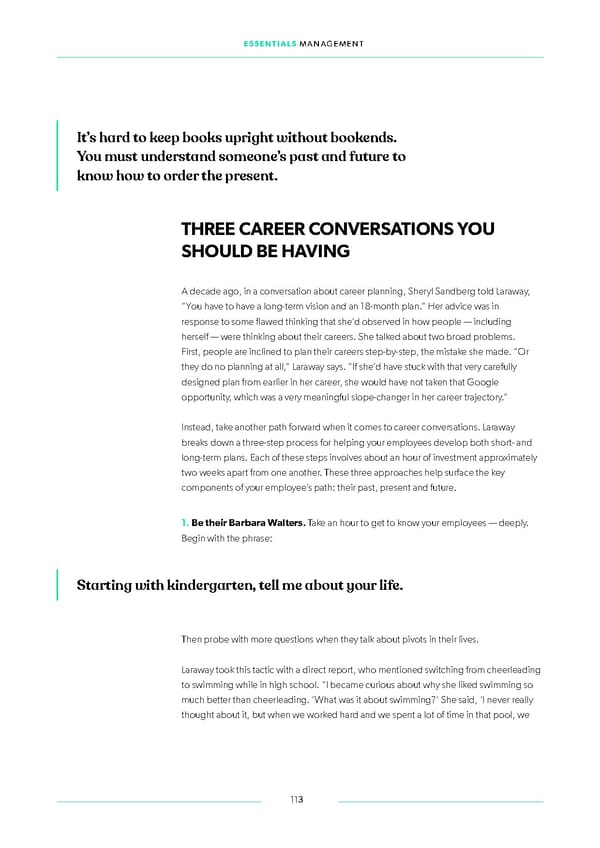ESSENTIALS MANAGEMENT It’s hard to keep books upright without bookends. You must understand someone’s past and future to know how to order the present. THREE CAREER CONVERSATIONS YOU SHOULD BE HAVING A decade ago, in a conversation about career planning, Sheryl Sandberg told Laraway, “You have to have a long-term vision and an 18-month plan.” Her advice was in response to some lfawed thinking that she’d observed in how people — including herself — were thinking about their careers. She talked about two broad problems. First, people are inclined to plan their careers step-by-step, the mistake she made. “Or they do no planning at all,” Laraway says. “If she’d have stuck with that very carefully designed plan from earlier in her career, she would have not taken that Google opportunity, which was a very meaningful slope-changer in her career trajectory.” Instead, take another path forward when it comes to career conversations. Laraway breaks down a three-step process for helping your employees develop both short- and long-term plans. Each of these steps involves about an hour of investment approximately two weeks apart from one another. These three approaches help surface the key components of your employee’s path: their past, present and future. 1. Be their Barbara Walters. Take an hour to get to know your employees — deeply. Begin with the phrase: Starting with kindergarten, tell me about your life. Then probe with more questions when they talk about pivots in their lives. Laraway took this tactic with a direct report, who mentioned switching from cheerleading to swimming while in high school. “I became curious about why she liked swimming so much better than cheerleading. ‘What was it about swimming?’ She said, ‘I never really thought about it, but when we worked hard and we spent a lot of time in that pool, we 113
 Essentials Management First Round Capital Page 112 Page 114
Essentials Management First Round Capital Page 112 Page 114